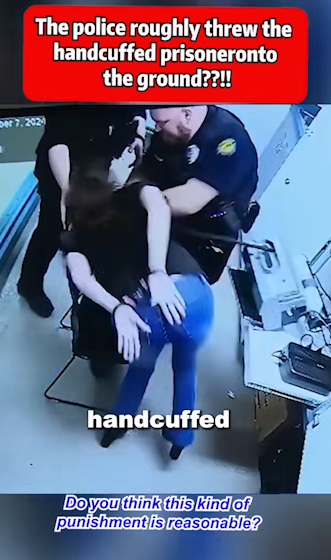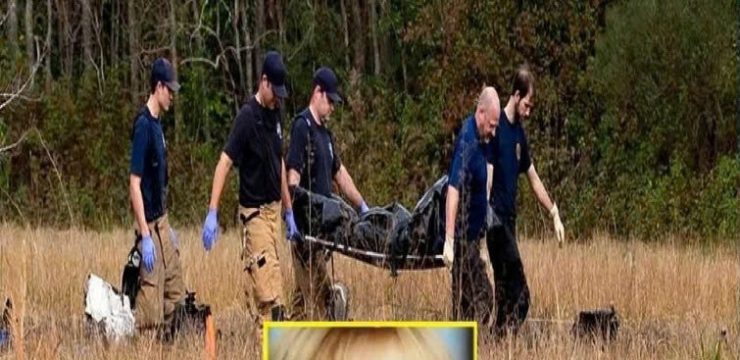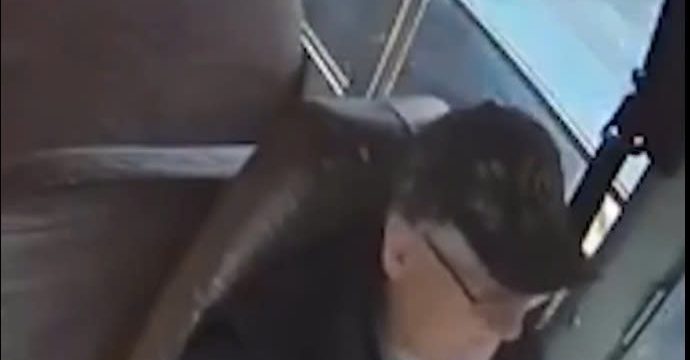What began as a routine December arrest quickly spiraled into a disturbing case that would ignite nationwide debate about excessive force and accountability in law enforcement. The arrest of 32-year-old Shanna McCree, initially detained for suspicion of driving under the influence, has become a defining example of how quickly routine police procedures can turn into violent encounters. The incident—caught on body camera and verified by multiple eyewitnesses—revealed a moment of unnecessary aggression that left McCree with a serious head injury and the public demanding answers about justice and police conduct.

According to the official report, McCree was involved in a minor traffic collision before being taken into custody by Officers Jacob Brian Cannon and Melissa Edmonds. The pair transported her to the local station for standard breathalyzer testing, a process that should have been straightforward and uneventful. However, what unfolded inside that police station would lead to criminal charges, resignations, and a firestorm of public outrage.
As the footage shows, McCree appeared visibly frustrated while waiting for the breath test. She reportedly used profanity and challenged the officers’ commands—behavior that, while disrespectful, did not pose any physical threat. After roughly twenty minutes of waiting, she was escorted to the testing area. When she asked to use the restroom, her request was denied until the test was completed. McCree complied and completed two breathalyzer attempts, but both tests failed due to technical issues with the equipment. Her patience wore thin, and an argument broke out between her and Officer Cannon. Within seconds, the situation escalated.
Cannon, who stood behind McCree, suddenly grabbed her and forcefully threw her to the ground. She hit the floor hard, suffering a deep laceration on her forehead that required seven stitches. Most shocking of all, she was handcuffed the entire time, offering no resistance or physical threat. Body camera footage and witness statements confirmed that McCree never attempted to flee or attack anyone. What was supposed to be a controlled environment turned into a violent display of power.
In the aftermath, Officer Cannon claimed he acted out of concern that McCree might try to escape—a claim that was swiftly dismissed after an internal investigation found no evidence to support it. The department’s review concluded that the use of force was excessive and unjustified. Cannon resigned soon after the report was completed, and criminal charges were filed against him for assault.
The court proceedings were closely followed by the public, especially advocates for police accountability. During the trial, prosecutors presented the disturbing footage that showed McCree’s head striking the hard floor and the officers standing over her as she lay injured. The defense attempted to argue that Cannon acted instinctively in a tense situation, but the judge was unconvinced. Cannon was ultimately sentenced to six months in jail and two years of probation.
While some saw the verdict as a step toward justice, many felt it didn’t go far enough. Civil rights groups and legal experts criticized the sentence as too lenient, arguing that law enforcement officers who abuse their power should face harsher penalties. “If an ordinary citizen had done the same thing,” one activist noted, “they’d be looking at years behind bars, not months.” For many, this case highlighted a double standard that continues to erode public trust in the justice system.
Others, however, saw the outcome as a rare example of accountability. Supporters of the ruling argued that Cannon not only faced criminal charges but also lost his career, reputation, and benefits. They pointed out that few officers are ever prosecuted for use-of-force incidents, and even fewer serve time. “The fact that he was charged, convicted, and sentenced at all shows progress,” one former police chief commented. Still, the broader question remains: is that progress enough to prevent future abuse?
The McCree case has sparked widespread discussion about police training, oversight, and the psychological pressures officers face on duty. Experts argue that law enforcement agencies must do more to teach de-escalation tactics and emotional regulation, especially when dealing with uncooperative or distressed individuals. Many departments are now re-evaluating their internal policies to ensure incidents like this do not recur. Transparency and accountability, they argue, must be non-negotiable components of modern policing.
For McCree, the physical wound eventually healed, but the emotional impact lingered. Her experience became symbolic of a larger struggle—one where citizens question whether the system meant to protect them might sometimes do more harm than good. Civil rights attorneys have since filed a civil lawsuit on her behalf, seeking damages for physical and emotional trauma. The outcome of that case could set further precedent for how similar incidents are handled in the future.
Beyond one courtroom or one police department, this case forces society to confront uncomfortable questions. How can we ensure officers who cross ethical lines are held fully accountable? Are existing disciplinary measures sufficient to deter misconduct, or do they merely reinforce a cycle of leniency? And most importantly, how can the public trust in law enforcement be restored when stories like McCree’s continue to emerge?
The answers may not come quickly, but one thing is clear: unchecked authority carries devastating consequences. The Shanna McCree case serves as a sobering reminder that power must always be balanced by restraint, compassion, and respect for the law. Law enforcement exists to protect and serve—not to intimidate or harm—and when that trust is violated, everyone pays the price.
Until stronger reforms are in place—ensuring transparency, independent oversight, and meaningful consequences for misconduct—incidents like this will continue to cast long shadows over police departments nationwide. True justice requires more than punishment; it demands change. And that change begins with acknowledging that even one act of abuse, if left unanswered, weakens the very foundation of public safety.





